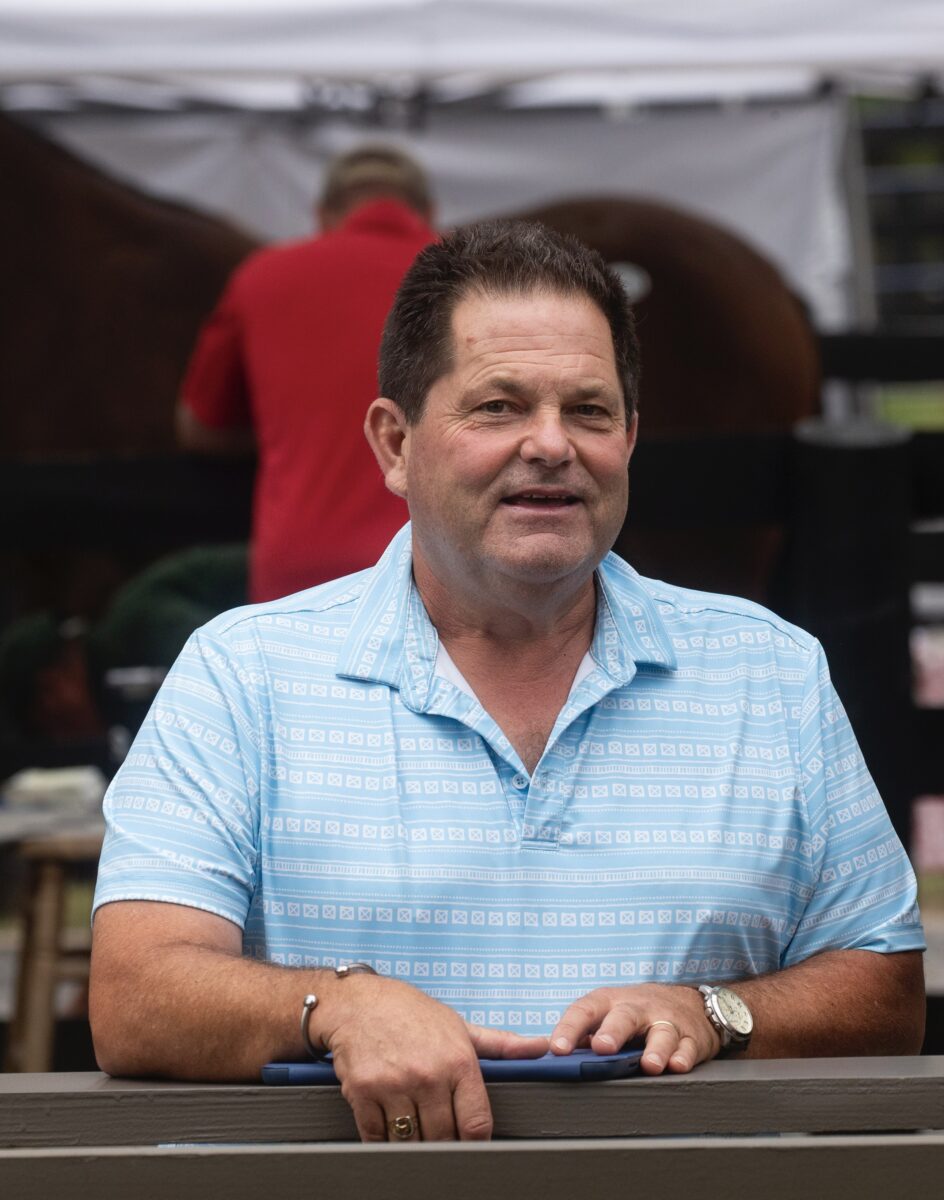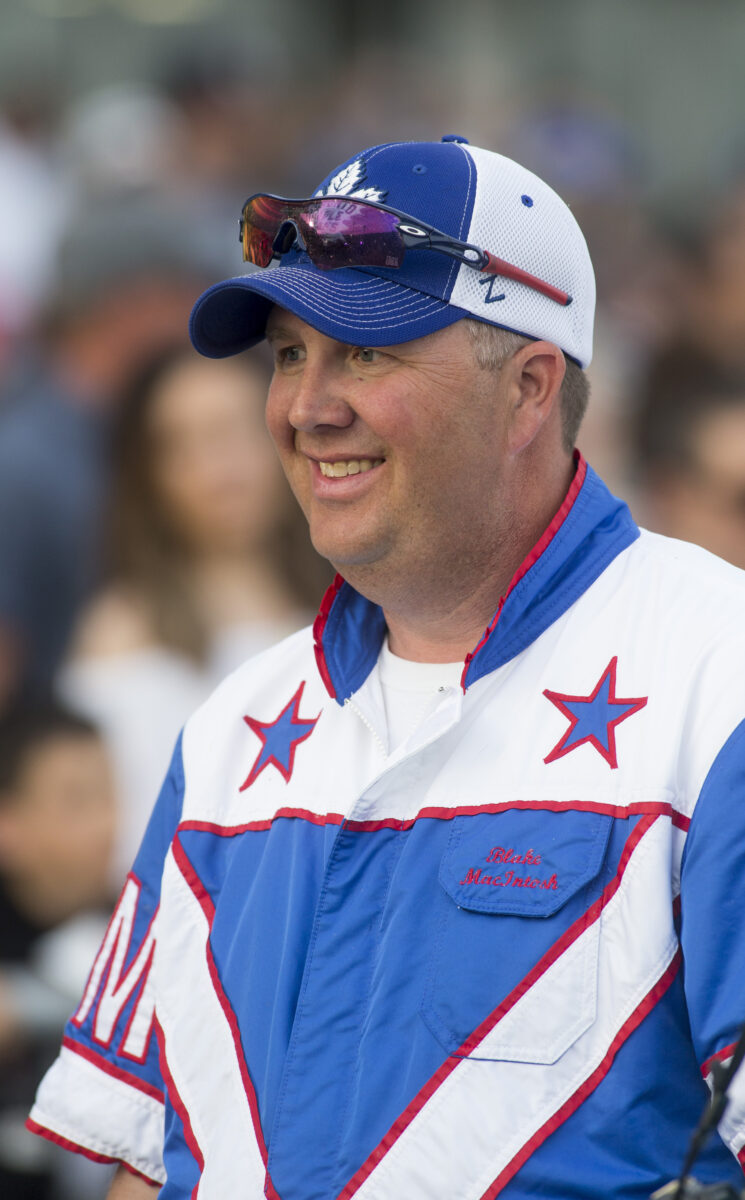The prosperous pairing of Tim Klemencic and Blake MacIntosh
by Murray Brown
It could be said that Tim Klemencic and Blake MacIntosh were born into harness racing. But the manner in which each entered the sport was different.
Klemencic is the youngest offspring of five born to Stan and Paula Klemencic. His parents had owned horses for many years and had established a breeding farm in Trenton, ON where they had a band of broodmares from which they raised yearlings for the marketplace.
“I was the only one of the five kids who expressed any significant interest in the horses,” Tim said. “So, when I returned home from university I pretty much did it all. I took care of the mares. I inseminated them when they were in heat. I foaled them out. I helped raise the babies and did all the intermediate steps involved in selling a yearling until it came time for them to go to the sale. At that time, I’d turn them over to David Reid and Preferred Equine who handled them through the time when they were sold.”
In recent years, probably due to the great success of the Kentucky program, we have raised them in Kentucky to take advantage, as some others have done of making our yearlings able to be dual eligible.
Whereas Tim was mostly involved with the breeding end of the business, MacIntosh became involved with buying yearlings, training them and hopefully developing good racehorses from his acquisitions. MacIntosh’s dad Wayne was a part-time horse trainer. He had a regular job, but would usually have a horse or two that he would fiddle with after work. Blake became attracted to the horses. However, his parents wanted him to get a college education. So, off to school he went. It wasn’t long after that that he decided that he had enough of school. He missed being around the horses. School was just too boring. Harness racing was not. It was exciting and he missed it.
In 2014, Blake bought a yearling that the Klemencics had consigned in the Harrisburg Yearling Sale. Tim introduced himself, thanked Blake for his patronage and wished him every possible success with the filly. Blake asked Tim if he liked the filly. Tim said he did.
“Then if you want to, you can come in and buy a piece of her,” Blake said.
Tim said “Yes.” Thus began a great friendship and a 10-year business relationship between the two. No year has gone by when Tim and Blake were not partners in one or up to 10 horses that Blake had in training.
Tim, your relationship with Blake has evolved from a business one to one combining both business and friendship.
“Indeed, it has. We hit it off from the start. Generally speaking, we like the same things in a horse. Together we look at a lot of yearlings. We generally look at them at the same time, but we don’t comment much while we are looking. After we have seen the horses, we then compare our views. More often than not we come to the same or somewhat similar conclusions.”
Blake, when you look at yearlings what do look for? What do you want to see? Also, what do you not want to see?
“I suppose I want what most good horsemen want. I want a well-bred, correct horse. I don’t particularly want a big horse. My experience with them is that I’ve had trouble keeping them sound. If I’m looking at trotters, a big strike is one that toes in. Those are likely to hit their shins and often are foul-gaited. The number one strike for me is one that is back on their knees. That type rarely stays sound. The buying I do with Tim is almost all restricted to fillies, mostly trotting fillies. Our game plan is to race them at 2 and 3 and then sell them to a breeder. Breeders do not want to buy a filly that stands back on her knees or ones that have any significant faults. We look to buy fillies who are quite correct.
“Here’s something that you will hear from very few horsemen. I may be the only one. I’m not interested in yearlings by Bettors Delight. I know that he is the all-time leading money-winning sire. I know that he has sired numerous champions, both colts and fillies. But his foals and me just don’t seem to get along.
“I’ve trained a whole bunch of them. But of all the ones I’ve trained, I’ve had only one decent horse. It’s probably not so much that I don’t particularly like them. I’m guessing that maybe they don’t like me and my training methods. From experience, for whatever reasons they and I just do not get along.”
What is it about you training program that they might be adverse to?
“I’m pretty aggressive. Some might say that I might be too demanding of the babies that I have in my charge. They might very well be right. I’m not the most patient guy in the world. I want to know fairly soon what I have or what I think I have. Usually by about January I think that I have a reasonably good reading on my then 2-year-olds. At that time, I might be inclined to sell the ones that I think will not align with my program. That’s not to say that the ones that I sell cannot and will not do well under someone else’s stewardship.”
Tim, you and Blake go to the sales together. Do you have a game plan?
“We try to look at as many yearlings as we can. I think that Blake can handle a whole lot more than I am able to. After I’ve looked at 30 or more, I get a little buggy eyed. They start looking the same. Blake can just keep going. I love looking at yearling videos. When we are at the sale, I’ve usually seen the videos of the yearlings we are looking at. Blake almost never has. We both agree that two sets of eyes are better than just one. After we have looked at them, we compare our thoughts. There are times when one of us has picked up something that the other has not. I think we complement each other well.”
Blake, Tim said that you don’t care much about yearling videos?
“That is mostly so. I’ve never had a horse win a race in the paddock or in the field. I’ll generally look at a video after I’ve seen a yearling and almost never before. I do that mostly for reassurance on a horse in which I might be interested. I watch the video to look for things that I don’t want to see. Things like paddling, going close to a knee, anything that looks to be irregular. If I don’t see any of those, I couldn’t care less how fast the horse is going in the video.”
Tim, how much is price a factor in your purchases?
“Obviously it’s of prime importance. We’ve bought horses at all price ranges. We’ve even hit six figures. Having said that, we’ve not been very successful when swinging for the fences. Our comfort zone is between $20K-$60K, but I think we both prefer $40K to $60K. We are not only more comfortable in that price range, but we’ve also been more successful there.”
Tim and Blake, you’ve had a few good winners in your partnership this season. However, the star achievement thus far has been in Monalishi winning the $288,000 Peaceful Way at Mohawk. Tell us how you came about acquiring her and her progress to that race.
“She is a filly that we might have normally crossed off before we had even looked at her. Her dam Pretty Phylly G was a fairly ordinary race filly, but she is a sister to the Hambletonian winner Royalty For Life. Looking further, even though her three previous foals had not raced, we looked at our notes on them. They were not the kind of individuals that we would have bid on. So, her ‘excuse’ for them not having raced was a valid one. When we looked at Monalishi, we both liked her. Maybe not ‘WOW’ liked her, but we felt she was very acceptable.
“Her sire Green Manalishi was a pretty good drawing card for us. It was his first crop. He was a very good well-bred son of Muscle Hill. We had looked at all of his yearlings in Kentucky. We had bought a filly by him there. That filly had broke well. We looked at all his yearlings at Harrisburg as well. An added asset, but not a necessary one is that his foals were eligible in Ontario, home for us and where we mostly race.
“Monalishi was selling on Day Three, where one might find the proverbial diamond in the rough. We looked at her. We both liked her. She was a far better individual than her dam’s three previous foals had been. We bought her for $28,000. The price was certainly right. I don’t know if, or how much further we might have gone.
“All winter long, she trained well, doing everything asked of her. We never thought she was great, but we never thought that we didn’t want to own her anymore. She was a nice filly, but we also had two others that we might have thought were a little better.
“We started racing her and she was very good, maybe not great, but certainly very good. Coming into the race, she had won four of her six starts. Her only losses came when cutting the mile. As with most horses, we thought that racing off the helmet might have been her preferred style.
“In the elimination of the Peaceful Way, she finished second, but she raced well. We were pleased with her and thought that if the stars were aligned properly, we had a fair shot of winning it all. Then her regular driver Jody Jamieson took off to drive a filly that I guess he thought had a better chance. I certainly didn’t blame him for that. He is a catch driver. Catch drivers do that all the time. As fate would have it, we instead ‘inherited’ Canada’s number one driver James MacDonald. Such is the way the cookie crumbles. I know that James spoke with Jody about the filly and that Jody was helpful to him. I don’t recall saying much to James, other than mentioning that I thought the filly was fit and I expected her to race well. I might have said that I believed she would race well coming from off the pace. The rest is history. James gave her a masterful drive and she won the race. We thought we owned a very nice filly. We now own one that may be a whole lot better than what we initially thought.”



















